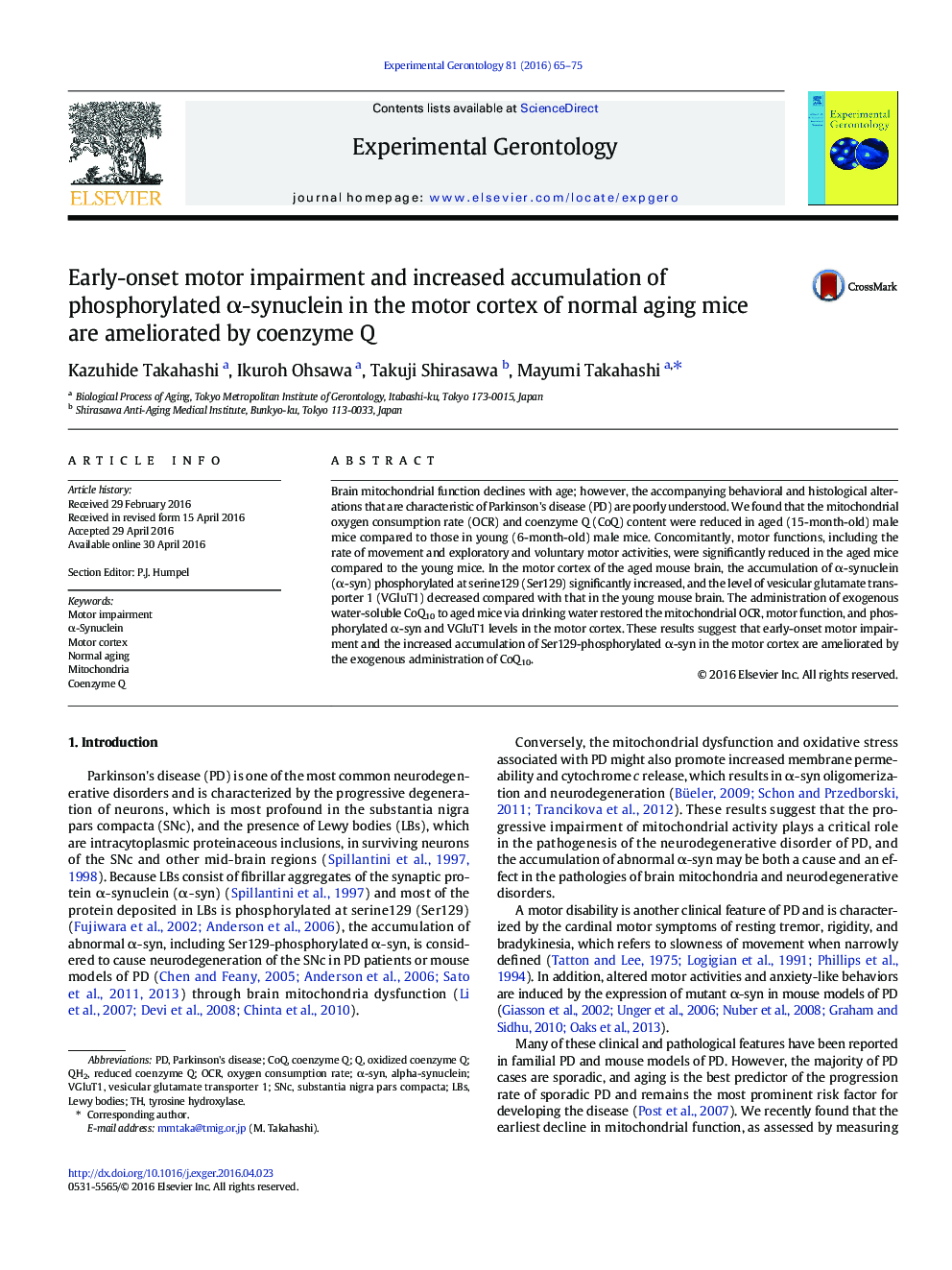| Article ID | Journal | Published Year | Pages | File Type |
|---|---|---|---|---|
| 8262819 | Experimental Gerontology | 2016 | 11 Pages |
Abstract
Brain mitochondrial function declines with age; however, the accompanying behavioral and histological alterations that are characteristic of Parkinson's disease (PD) are poorly understood. We found that the mitochondrial oxygen consumption rate (OCR) and coenzyme Q (CoQ) content were reduced in aged (15-month-old) male mice compared to those in young (6-month-old) male mice. Concomitantly, motor functions, including the rate of movement and exploratory and voluntary motor activities, were significantly reduced in the aged mice compared to the young mice. In the motor cortex of the aged mouse brain, the accumulation of α-synuclein (α-syn) phosphorylated at serine129 (Ser129) significantly increased, and the level of vesicular glutamate transporter 1 (VGluT1) decreased compared with that in the young mouse brain. The administration of exogenous water-soluble CoQ10 to aged mice via drinking water restored the mitochondrial OCR, motor function, and phosphorylated α-syn and VGluT1 levels in the motor cortex. These results suggest that early-onset motor impairment and the increased accumulation of Ser129-phosphorylated α-syn in the motor cortex are ameliorated by the exogenous administration of CoQ10.
Keywords
Related Topics
Life Sciences
Biochemistry, Genetics and Molecular Biology
Ageing
Authors
Kazuhide Takahashi, Ikuroh Ohsawa, Takuji Shirasawa, Mayumi Takahashi,
